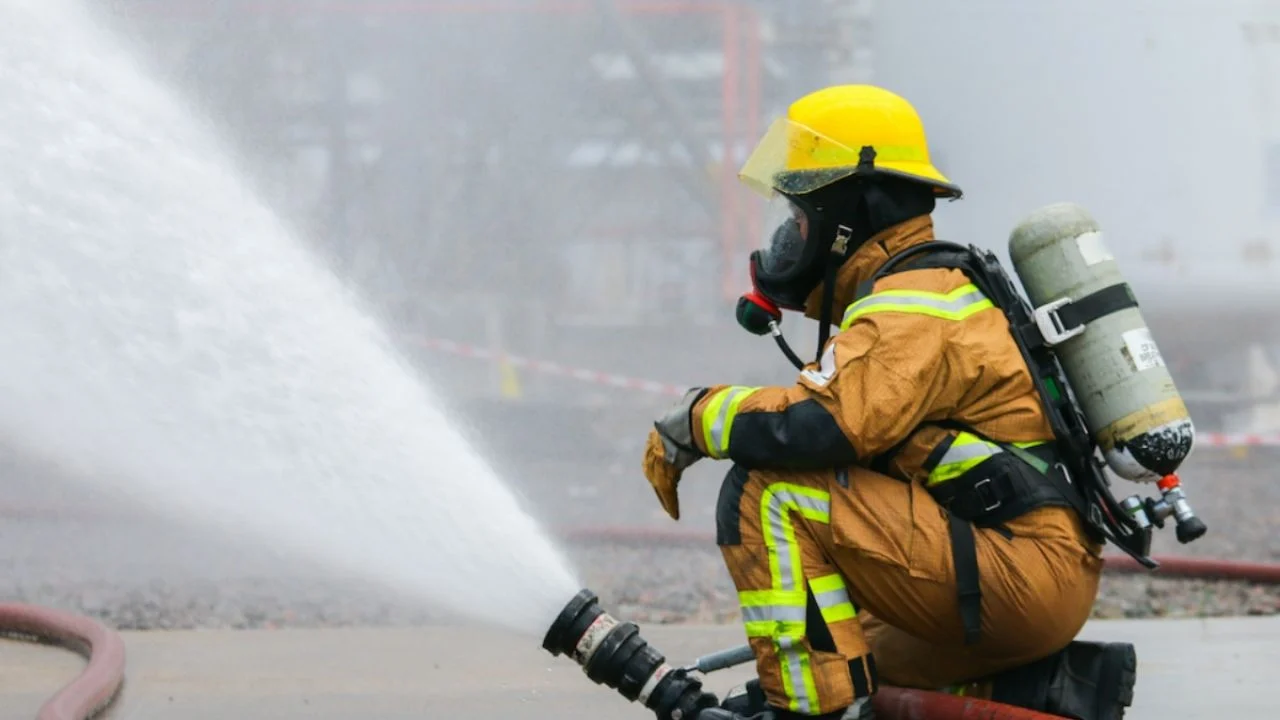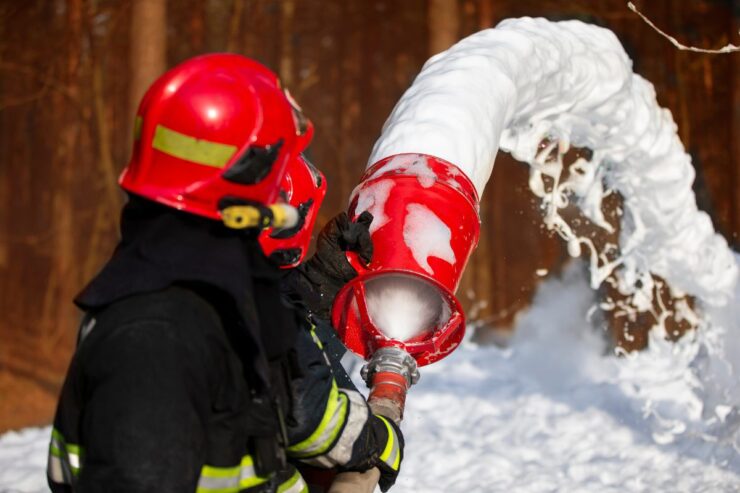Firefighting foam has been a cornerstone of fire safety for decades, praised for its effectiveness in battling intense blazes. Yet, recent years have revealed a troubling reality. The long-term costs of using aqueous film-forming foam (AFFF) extend far beyond its purchase price.
From military airfields to local fire stations, AFFF’s widespread use has left a legacy of environmental contamination and health concerns. As lawsuits mount and cleanup costs soar, fire departments, governments, and communities grapple with one sobering question. What is the true cost of this once-celebrated firefighting tool?
This article delves into the complex calculus of AFFF used, weighing its undeniable benefits against its far-reaching, often hidden expenses.
Environmental Costs of AFFF

The environmental impact of AFFF use presents a staggering financial burden. PFAS compounds, key components in AFFF, persist in ecosystems for decades, earning the moniker “forever chemicals.”
The ubiquity of PFAS contamination is alarming. A comprehensive study by the U.S. Geological Survey (USGS) revealed a startling fact. Approximately 45% of the nation’s tap water contains one or more PFAS compounds. This study, which analyzed 32 specific PFAS types, underscores the widespread nature of the contamination.
However, it’s crucial to note that this may be an underestimation of the true extent of PFAS presence. The PFAS family encompasses over 12,000 distinct chemical compounds, many of which elude current detection methodologies.
This vast chemical diversity poses significant challenges for comprehensive environmental monitoring and risk assessment. It masks the full scale of PFAS contamination in our water resources.
Remediation costs for PFAS-contaminated sites are exorbitant. The Department of Defense’s PFAS remediation cost projections have escalated rapidly.
Recent estimates indicate a $7 billion requirement post-FY2023. According to the Environmental Working Group, this marks a $2.2 billion increase from earlier projections and a $5 billion surge from 2021 forecasts.
Aquatic ecosystems bear a significant brunt, according to ScienceDirect. Analysis of PFAS concentrations in U.S. freshwater fish reveals median levels 278-fold higher than those in FDA-tested commercial fish (2019-2022).
Toxicological modeling indicates that consuming just a single exposure of toxic freshwater fish annually could significantly elevate serum PFAS levels.
This underscores the potential for chronic low-dose exposure through dietary sources. Moreover, this contamination threatens both wildlife and human food chains.
Health and Socioeconomic Impacts

The health implications of PFAS exposure from AFFF manifest in long-term public health costs. The US Environmental Protection Agency (EPA) has linked PFAS exposure to various health issues. These include thyroid disease, increased cholesterol levels, and certain cancers.
Even pregnant women and fetuses are not spared. JAMA Network states that PFAS exposure can cause premature babies, lower weight at birth, and developmental disorders.
These health effects translate into substantial economic burdens. Annual health-related costs of PFAS exposure in the USA are touted at a minimum of $ 5.5 billion and a maximum of $ 63 billion.
In the U.S., the scale of impact has also led to a complex legal landscape. Victims are holding the government accountable for its lenient approach toward AFFF.
The lawsuits have boomed, with individuals and communities seeking compensation for health issues and property damage. The AFFF foam lawsuit highlights the far-reaching consequences of AFFF use and the growing recognition of its true costs.
Moving on, socioeconomically, PFAS contamination can depreciate property values. This depreciation can erode local tax bases, impacting community services.
To mitigate these impacts, proactive biomonitoring programs and targeted health interventions in affected communities are crucial. Moreover, economic support for affected industries and property owners should be considered in comprehensive AFFF management strategies.
Legal and Regulatory Landscape

The proliferation of AFFF-related health and environmental issues has catalyzed a complex regulatory framework.
The EPA launched the PFAS Strategic Roadmap in 2021. It outlines aggressive action to restrict PFAS releases and accelerate the cleanup of contaminated sites. This includes designating certain PFAS as hazardous substances under CERCLA. This has impacted liability for AFFF manufacturers and users.
Moreover, the recent legislative action in Massachusetts marks a significant shift in the AFFF lawsuit landscape. According to USA Today, Governor Maura Healey’s new law, effective January 2025, mandates PFAS disclosure in firefighting gear. Also, it plans a complete ban on PFAS-containing equipment by 2027.
This pioneering approach could influence similar actions nationwide, addressing both firefighter health and environmental concerns.
Concurrently, the legal arena has seen a surge in AFFF foam lawsuits. As of August 2024, TruLaw states that over 9,500 cases have been consolidated in AFFF multidistrict litigation (MDL). Legal actions against AFFF producers claim these companies were or should have been aware of the health hazards linked to PFAS chemicals.
Simultaneously, regulatory agencies are implementing more stringent guidelines. As an example, the EPA has put forth a proposal to establish a new Maximum Contaminant Level for PFOA and PFOS in drinking water. It has set it to an extremely low concentration of 4 parts per trillion.
This proposed standard reflects the growing concern over these persistent chemicals and their potential impact on human health.
To navigate this evolving landscape, stakeholders must stay informed about emerging regulations and implement robust compliance programs.
FAQs

Q. How can fire departments transition from AFFF and maintain effective fire suppression capabilities?
Fire departments can explore fluorine-free foam alternatives, invest in new equipment designed for these alternatives, and implement revised training protocols. Gradual phase-out plans, coupled with comprehensive risk assessments, can ensure a smooth transition while maintaining fire safety standards. Collaboration with environmental experts can help departments develop site-specific strategies for AFFF replacement and contamination mitigation.
Q. What are the potential long-term economic impacts on communities affected by AFFF contamination?
Communities may face decreased property values, increased healthcare costs, and potential loss of industries reliant on clean water sources. Long-term economic recovery may require significant investment in environmental remediation and economic diversification strategies. Affected communities might need to allocate resources for ongoing environmental monitoring and public education programs to address PFAS-related concerns.
Q. How might the AFFF controversy impact future firefighting technology development?
The AFFF controversy may accelerate research into environmentally friendly fire suppression technologies. This could lead to innovations in foam formulations, application methods, and fire prevention strategies, potentially revolutionizing firefighting practices globally. This shift may foster collaboration among chemists, environmental scientists, and fire safety experts.
The true cost of AFFF extends far beyond its immediate firefighting efficacy, encompassing a complex web of environmental, health, and socioeconomic factors.
As we navigate this multifaceted issue, it becomes clear that sustainable fire safety solutions must balance immediate effectiveness with long-term societal well-being. This challenge presents an opportunity to redefine our approach to fire safety, fostering innovation that protects both lives and our planet’s future.

